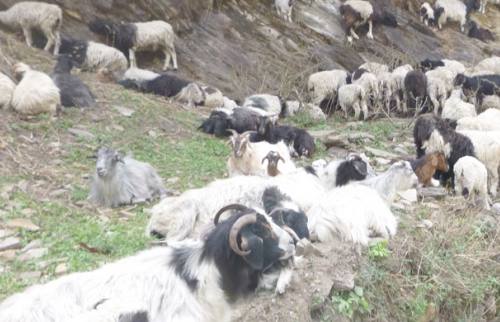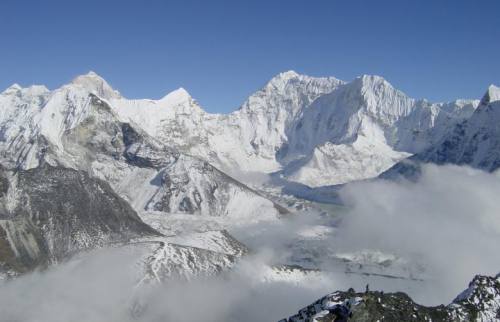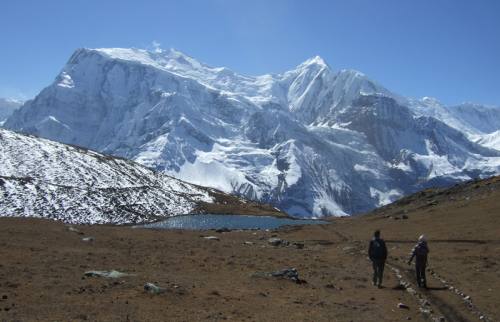Guerilla Trekking
About Trip
The Guerilla Trek has now become a new tourist attraction in Nepal. This trekking route provides one with an opportunity to meet the people who have yet to be affected by commercialization. A lot of ethnicities enrich the route including Brahmin, Kshetri, Dalit, Gurung, Magar, Newar and Thakuri.
As the name suggests, the Guerrilla Trek trail follows the footsteps of the aost guerillas during the decade-long insurgency. The route begins in Beni of Myagdi district, goes around Baglung and passes through the Dhorpatan Hunting Reserve and goes on to Rukum and Rolpa districts. The route was used by the Maoist insurgents during the decade-long war.
Guerilla TrekkingScenic beauty of this region is unmatched. One can have a breathtaking view of the Dhaulagiri range and wide meadows with pine trees. The elevation ranges from about 800-metre at Chaurjahari to the peak of Pyutha Himal at 7,245-metre above sea level.
This trail has now gained popularity following the publishing of The Guerrilla Trek (aka, the Shangrila Trek) with Dhorpatan Hunting Reserve. Penned by Alonzo Lyons, the book can be taken as a guide to the trail as it incorporates the detailed information about the route.
This trekking trail offers a marvelous trekking journey through the heartland of the post-conflict areas. As an alternative to several other popular trekking trails, this route can be a pleasure to return visitors and all those loving Nepal.
The book also provides instructions to enter a newly promoted, magnificent area worth visiting for the natural splendor as well as the hospitable people.
However, the infrastructural development in the region is inadequate. Rukum and Rolpa were the homeland of many revolutionaries. The districts were also the epicenter of the Maoist insurgency. It is also challenging to make the locals aware of how they could reap benefits from tourism.
Trekkers along this route can retrace the footsteps of the Maoist guerrillas and imagine how they had hiked and fought such hilly terrain. More than 16,000 people had lost their lives in the armed insurgency that started in 1996 and ended in 2006 after the signing of the Comprehensive Peace Accord.
This region is blessed with wide ranging natural resources and biodiversity. Captivating waterfalls, rivers, caves and lakes like Kamala Daha (Lotus Lake), and Sun Daha and high Hialaya to the north are some of the main attractions. Kham culture is a unizue feature of the northern Rolpa and eastern Rukum. The Khams are a sub-group of the Magar community distinguishing customs and unique language of the Tibeto-Burman family.
Paddy is cultivated up to the mid-hills and barley, maize, millet, wheat, and potato as well as apples and apricots are farmed in the upper hills of the region. The area also boasts a lot of wonderful high elevation meadows used for monsoon pastureland of cattle and buffalo, and foraging for Yarshagumba, also known as the Himalayan Viagra in the rugged highland.
Day to Day Itinerary
Day 01:Arrival in Kathmandu
Day 02:Sightseeing / Cultural Day in Kathmandu
Day 03:Kathmandu (1320m) to Beni (830m)
Day 04:Beni to Takam (1665m) A six hours trek takes to Takam.
Day 05:Takam to Lamsung (2250m) Trek to Lamsung, it takes six hours.
Day 06:Lamsung to Gurjaghat (3020m) Climb through dense pine forests, with musk deer darting in the undergrowth.
Day 07:Gurjaghat to Dhorpatan (2860m)
Day 08:Dhorpatan to Nisi Dhor (2620m) A five hours trek takes to Nisi Dhor.
Day 09:Nisi Dhor to Tallo Sera
Day 10:Tallo Sera to Rujhikhola Walk to Lukum in Rukum, village populated only Magars and Dalits (low castes).
Day 11:Rujhikhola to Thabang A five hours trek takes to Thabang.
Day 12:Thabang to Jaljala It takes five hours to reach Jaljala.
Day 13:Jaljala to Jelbang Trek down to Jelbang.
Day 14:Jelbang to Sulichaur
Day 15:Sulichaur to Kathmandu
Day 16:Kathmandu
Cost Include
- Airport pickup/drop
- Kathmandu hotel on twin share & breakfast, (upgrade or budget possible)
- Kathmandu sightseeing tour with guide, entrance fees
- Dhorpatan entrance fees
- Trekking guide, porters
- Daily wages and insurance of guide and porters
- Staying in local lodges/ homestay while on trek
- Breakfast, lunch and dinner on trek
- First-aid kits and communication devices (with guide) on trek
Cost Doesn't Include
- International flights
- Nepal visa fees
- Lunch and dinner while you stay in Kathmandu
- Any kind of drinks while on trek
- Your personal medical and travel insurance, evacuation/medical expenses
- Tips etc.
Detail Itinerary
Day 01Arrival in Kathmandu Upon arrival at Kathmandu International Airport transfer to your hotel in Kathmandu or Bhaktapur. Short briefing will follow concerning the necessary formalities and your trekking itinerary. Depending upon your arrival time you may spend free time visiting nearby sanctuaries or resting.
Day 02Sightseeing / Cultural Day in Kathmandu Valley Half day sightseeing around UNESCO Bhaktapur / Kathmandu where your guide will escort you on a tour of Buddhist and Hindu temples and shrines reflecting ancient local traditions. There is time to explore the city’s many places of interest on your own or take a rest while trekking permits are finalised. In the evening sample a delicious traditional Nepali dinner. Overnight in Kathmandu.
Day 03Kathmandu (1320m) to Beni (830m) It takes nine hours us ride to Beni. Overnight in Beni
Day 04Beni to Takam (1665m) A six hours trek takes to Takam. From the Myagdi district headquarter, one has to follow a gravel road for 24-km to Darbang and start walking. Takam is a three-hour walk away with Gurjal Himal towering overhead. Overnight in Takam.
Day 05Takam to Lamsung (2250m) Trek to Lamsung, it takes six hours. This is where the scenery starts getting even more dramatic. This is what Nepal used to be like before the trekkers got here. Locals are not used to foreigners and have a lot of stories to tell about the Maoist insurgency.
Day 06Lamsung to Gurjaghat (3020m) Climb through dense pine forests, with musk deer darting in the undergrowth. The meadows on the ridge offer 180 degree views of the entire Dhaulagiri range up to Churen Himal in the west. It takes seven hours to reach Gajurghat.
Day 07Gurjaghat to Dhorpatan (2860m) Cross over from Myagdi to Baglung and into the former Tibetan refugee camp which was serviced by an airfield built by the Swiss in the 1950s. this is also the entrance to Dhorpatan, a Hunting Reserve, where one can spot mountain goats and blue sheeps. It takes five hours to reach Dhorpatan.
Day 08Dhorpatan to Nisi Dhor (2620m) A five hours trek takes to Nisi Dhor.It is a paradise for birds. Watch pheasants, and other migratory species. Hard to imagine that people fought a war here. There are cow sheds in the monsoon, but in the winter these high pastures are deserted.
Day 09Nisi Dhor to Tallo Sera It takes seven hour to reach Tallo Sera. Cross over from Baglung to Rukum into Magar country and enterthe former Maoist bas area. There are dense forests all the way, so it must have been easy to hide here from thehelicopter patrols. The villages are picturesque and there is always some kind of Magar festival going on.
Day 10Tallo Sera to Rujhikhola Walk to Lukum in Rukum, village populated only Magars and Dalits (low castes). This is about as medieval as it gets in Nepal nowadays. It takes six hours to reach there.
Day 11Rujhikhola to Thabang A five hours trek takes to Thabang. It is the cradle of the Maoist revolution. It was damaged in army attacks and parts of the town were flattened by ‘tora bora’ mortar shells dropped from helicopters. There has been some development of infrastructure after the war ended, and the people are eager and friendly.
Day 12Thabang to Jaljala It takes five hours to reach Jaljala. The highest point in Jaljale is Dharampani (3,900) and there is a great view from Apisaipal in the west to Dhaulagiri in the east.
Day 13Jaljala to Jelbang Trek down to Jelbang. It takes six hours. Move down from the high mountains and the village are ethnically mixed.
Day 14Jelbang to Sulichaur This is where Rolpa is finally reached. Rolpa was also a rebel base area and for many of the ten years of war under total Maoist control. One can eat at one of the many commune restaurants run by Maoist cooperative, where staff are relatives of those who were killed in the fighting.
Day 15Sulichaur to Kathmandu Take a bus to Kathmandu. It takes 13 hours.
Day 16Kathmandu Departure from Kathmandu









